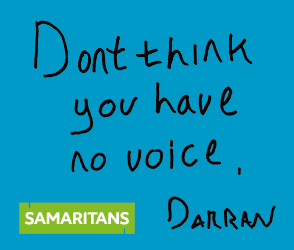IMG Proposals Rover Analysed : Sat Oct 01, 2022 2:17 pm
IMG made their proposals to the clubs this week and I thought it might be interesting to look at them in a bit of detail.In my opinion, there is a lot to like. That starts with the nature of the partnership with IMG. If you pay consultants they’re not going to be as invested in your success. If you take investment from, say, private equity… well that always reminds me of the bit in Goodfellas when the mob take over the nightclub ( ‘business is bad? F U, pay me. Oh, you had a fire? F U, pay me. Place got hit by lightning, huh? F U, pay me). With IMG, they only get paid if RL gets paid. That is also a big vote of confidence in RL and its potential to do better… or a vote of no confidence in how it has been run in the past, if you want to be harsh. Some independent leadership will be welcome after some of the farcical decisions and vested interests that have plagued the game. Yes, they may only care about the money but there is a cleanness and honesty to that.
There’s going to be a new brand. No more Super League. While it is only presentational, I think it is important. The SL brand was fine for its time but it feels tired now and we need a symbolic reset.
The word ‘dross’ was apparently used to describe some of the existing ‘product’, and that is an important acknowledgement. We’re often (sometimes justifiably) sensitive to criticism and a bit defensive as a sport. This feels like an intervention from somebody who cares about us (or with whom we at least have shared interests and goals). A lot of SL contests are not compelling - some are barely contests. The first step in solving a problem is recognising it.
There’s stuff about new markets, central co-ordination and a better aligned calendar (including cutting loop fixtures), that seems sensible enough. But the proposed grading system will be the focus of most people’s attention. It has inevitably brought to mind licensing… and its failings. However, we have tried just about every imaginable model (except full on franchising) now and they all have limitations/problems. This also sounds like a significant upgrade on licensing, in that it will not be built on foundations of donkeycack. There’s a need for and commitment to (intentional) transparency. The criteria haven’t been decided yet, but we can be pretty confident that IMG will develop them to identify the strongest clubs rather than choosing clubs and then working backwards from there.
Although A, B and C grading are mentioned, I think/hope that is just to make it digestible for the people who stopped reading 200+ words ago, and that the scoring will be more sophisticated and ‘live’ than that.
I think it can reasonably speculated that assessments will cover playing performance, facilities, gates, revenue/financial stability, geographical expansion/new markets and player development. Weightings are hard to predict but here is how I would approach each of those.
Playing performance. Straight away, forget about league positions and instead focus on league win %. I’d suggest doing it on a rolling basis over three years, so clubs always know where they stand and it is fluid. Clubs don’t have to worry about one freak bad year but nobody is unduly protected. Obviously a club in the second tier will expect win more games than a similarly sized club in the top tier, so you’d apply a multiplier for top tier teams so everybody could be judged on one scale.
Facilities and fans. Licensing basically had good and not good, which was unnecessarily blunt. Give a certain number of points for every 500 capacity/seats/fans with a multiplier if facilities are of a high standard. It’ll never be perfect but has to better than 8000 fans scoring the same as 3000 and means that realistic medium-term gains are valued.
Revenue and financial stability. The former is easy (although involves double counting fans, to some degree), the latter could make this system look silly - but only if it isn’t prepared to react. Both kinda boring from a fan perspective, so moving on…
Geographical expansion/new markets. Distance and population density make this complicated, so I would go pretty crude on this one. M62 heartland clubs null points. York, Sheffield, Cumbrian clubs, some points. London, Wales, Newcastle, Cornwall max points.
Academies and player production. Do you look at facilities and processes because they’re current or production, which is more meaningful but reflects more on what the academy was 5 years ago? And/or just, as has been mooted, have a club-trained quota for the match day 17. I’d probably go for the last, but several clubs (not least Rovers) would have to pull their socks up pdq to meet even a modest quota week in, week out. You would also have to allow all clubs to run academies.
The biggest challenge is when to inform clubs and make the announcement of them being promoted or demoted. Early would allow better prep and adjustment but would land oddly with much of the season still to play. Plus, Sod’s law, for any marginal decision you’re bound to see the demoted team go on winning run or a slump in form from the promoted team to render the decision out of date by season’s end.
Finally, they’re talking about putting a player salary floor, for the top tier at least. I’ve no problem with that, so long as it is set at a sensible level and no club is forced to spend for spendings sake. If spending on facilities and player development mean you can’t field a competitive first team, that is as bad as vice versa.








